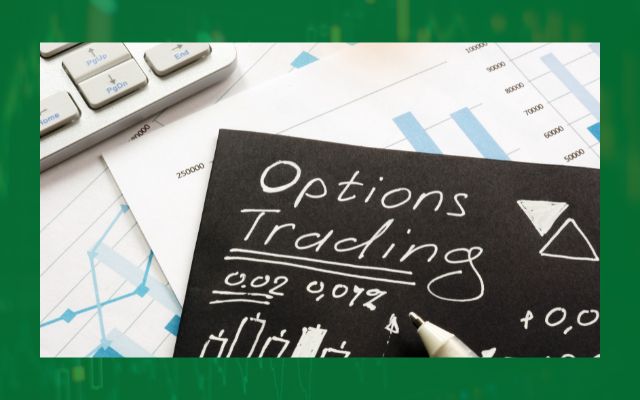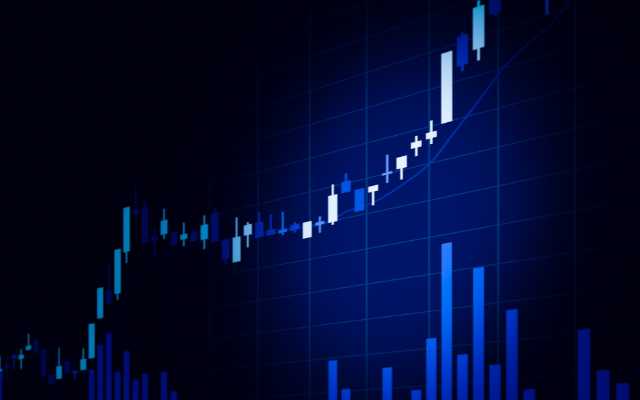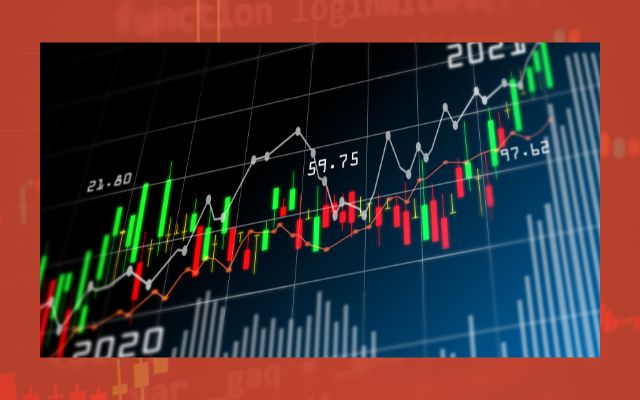What is Trading and How does it Work?

What is Trading and how does it work- Trading is a popular way for individuals to make money by buying and selling financial assets. It involves the purchase and sale of securities such as stocks, bonds, currencies, commodities and more, with the goal of making a profit. Trading can be done on various markets, such as stock exchanges, options exchanges, and forex markets.
It can be a full-time or part-time activity and can be done from anywhere with an internet connection. Trading can be a complex and dynamic field, with many different strategies and techniques used to make decisions.
In this discussion, we will explore the basics of trading and how it works, as well as the different types of trading and the potential advantages and risks involved. Whether you are new to the financial world or simply looking to expand your knowledge, this information will provide a better understanding of the world of trading.
What is trading?
Trading refers to the buying and selling of financial instruments such as stocks, bonds, currencies, commodities, or derivatives. The goal of trading is to make a profit by buying an asset at a lower price and then selling it at a higher price. There are different types of trading, including day trading, which involves buying and selling financial instruments within the same trading day, and long-term trading, which involves holding an asset for a longer period of time.
Traders can use various strategies to make a profit, such as technical analysis, which involves using charts and other data to predict future price movements, or fundamental analysis, which involves studying the underlying financial and economic factors that could impact an asset’s price.
Trading can be done through various platforms, including stock exchanges, over-the-counter (OTC) markets, and online trading platforms. Traders can also use leverage, which allows them to control a large amount of an asset with a relatively small amount of capital, but also increases the potential risk of loss.
Trading can be risky and it’s important to understand the risks before getting started. It’s also important to have a good understanding of the markets and the financial instruments you’re trading.
What are the Types of Trading
There are several types of trading, including:
- Day trading: This involves buying and selling financial instruments within the same trading day. Day traders use short-term strategies to make quick profits from small price movements.
- Swing trading: This involves holding an asset for a few days to a few weeks. Swing traders use both technical and fundamental analysis to identify intermediate-term price trends and opportunities.
- Position trading: This involves holding an asset for a longer period of time, such as several months to a few years. Position traders use both technical and fundamental analysis to identify long-term price trends and opportunities.
- Scalping: This is a type of day trading where traders take advantage of small price movements by buying and selling an asset quickly. Scalpers use high-frequency trading strategies and rely on high leverage to make small but frequent profits.
- Algorithmic trading: This is a type of trading that uses computer algorithms to make decisions and execute trades based on pre-defined rules and parameters. It’s commonly used in high-frequency trading.
- High-frequency trading: This is a type of algorithmic trading that uses advanced technology and high-speed internet connections to execute trades at a high rate and speed.
- Options trading: This is a type of trading that involves buying and selling options contracts, which are agreements that give the holder the right, but not the obligation, to buy or sell an underlying asset at a specific price and at a specific time.
- Futures trading: This is a type of trading that involves buying and selling futures contracts, which are agreements to buy or sell an underlying asset at a specific price and at a specific time in the future.
It’s important to note that different types of trading may be suitable for different types of investors, depending on their risk tolerance, investment objectives, and level of experience.
How Trade Works?
Trading works by buying an asset at a lower price and then selling it at a higher price in order to make a profit. The process of trading typically involves the following steps:
- Identifying the asset to trade: This could be a stock, a currency, a commodity, a bond, or a derivative. The asset is selected based on the trader’s market analysis, research, and investment strategy.
- Placing an order: Once the asset is selected, the trader places an order to buy or sell the asset at a specific price. Orders can be placed through a broker or an online trading platform.
- Execution of the trade: Once the order is placed, the trade is executed at the specified price. The trade is considered complete when the asset is bought or sold at the agreed upon price.
- Holding and monitoring the asset: The trader will then hold the asset and monitor its performance. This could involve using technical analysis or fundamental analysis to identify price trends and make decisions about when to sell the asset.
- Selling the asset: When the trader believes the asset has reached its peak price or the trade objective has been achieved, the trader will place an order to sell the asset. The asset is then sold at the current market price, and the profit or loss is calculated based on the difference between the purchase and sale price.
It’s important to note that trading can be risky and it’s important to have a good understanding of the markets and the financial instruments you’re trading. It’s also important to have a risk management strategy in place to mitigate potential losses.
What is online trading?
Online trading refers to the process of buying and selling financial assets through an online platform. Online trading platforms, also known as online brokers, are web-based portals that allow individuals to access financial markets and execute trades. These platforms typically offer a variety of financial instruments such as stocks, bonds, options, and currencies, as well as tools for research, analysis, and portfolio management.
Online trading platforms are typically accessible from anywhere with an internet connection and can be used to trade on various markets such as stock exchanges, options exchanges, and forex markets. The process of opening an account, depositing funds and executing trades are usually done online and with a few clicks.
Online trading has several advantages over traditional, offline methods of trading such as broker-assisted trading. It generally offers lower costs, more flexibility, and greater convenience for traders. Additionally, the availability of real-time market data, and trading tools such as charts, indicators, and news feeds allows online traders to make more informed decisions and execute trades quickly.
However, online trading also has its own set of risks, such as the potential for technical difficulties and the need for traders to have a good understanding of the markets and financial instruments they are trading. It is important to choose a reputable and reliable online broker and to have a solid understanding of the risks involved before starting to trade online.
What are the advantages of Trading?
There are several advantages to trading, including:
- Potential for financial gain: Trading allows individuals to potentially earn profits by buying and selling assets at a higher price than they were purchased for. This can be a source of income or a way to grow wealth over time.
- Diversification of investments: Trading allows individuals to diversify their investment portfolio by buying and selling different types of assets. This can help to spread risk and potentially increase overall returns.
- Flexibility: Trading can be done on a full-time or part-time basis, and can be done from anywhere with an internet connection. This allows for flexibility in terms of when and where trades are executed.
- Control: Trading gives individuals the ability to make their own investment decisions and manage their own portfolios. This allows for greater control over one’s financial future.
- Liquidity: Many financial instruments traded in the markets, such as stocks and currencies, are highly liquid, which means they can be bought and sold quickly and easily with minimal price impact.
- Leverage: Trading allows investors to control a large amount of capital using relatively little of their own money, through the use of leverage. This can increase the potential returns on investment, but also increases the risk.
- Real-time market data: Online trading platforms provide real-time market data and trading tools, such as charts, indicators, and news feeds, which allows traders to make more informed decisions and execute trades quickly.
It’s important to note that trading is risky and it’s important to have a good understanding of the markets and the financial instruments you’re trading. It’s also important to have a risk management strategy in place to mitigate potential losses.
Trading vs Investing
Trading and investing are both ways to make money by buying and selling financial assets, but they have some key differences.
Trading typically refers to the buying and selling of financial assets with the goal of making short-term profits. Traders often use technical analysis and chart patterns to make decisions and may hold onto assets for a few minutes or days. Trading can be done on various markets, such as stock exchanges, options exchanges, and forex markets.
On the other hand, investing typically refers to the buying and holding of financial assets with the goal of making long-term profits. Investors often use fundamental analysis to make decisions and may hold onto assets for months or years. They also tend to focus on buying assets that are undervalued with the expectation that the market will eventually recognize their true value.
In summary, trading is more focused on short-term profits and speculation, while investing is more focused on long-term growth and capital appreciation. It’s important to note that both trading and investing have their own set of risks, and it’s important to have a solid understanding of the markets and the financial instruments you’re buying and selling.
- How To Start Trading Stocks
- What are Options Trading Strategies?
- What is Options Trading? Types, Benefits, and More
In conclusion,
Trading is a popular way to make money by buying and selling financial assets. It involves the purchase and sale of securities such as stocks, bonds, currencies, commodities and more, with the goal of making a profit. Trading can be done on various markets and can be a full-time or part-time activity.
It can also be done from anywhere with an internet connection. Trading can be a complex and dynamic field, with many different strategies and techniques used to make decisions. While it can offer potential financial gain, it’s important to have a good understanding of the markets and the financial instruments you’re trading.
It’s also important to have a risk management strategy in place to mitigate potential losses. It’s important to remember that trading is risky, and it is important to be aware of the potential risks and rewards before getting started.




